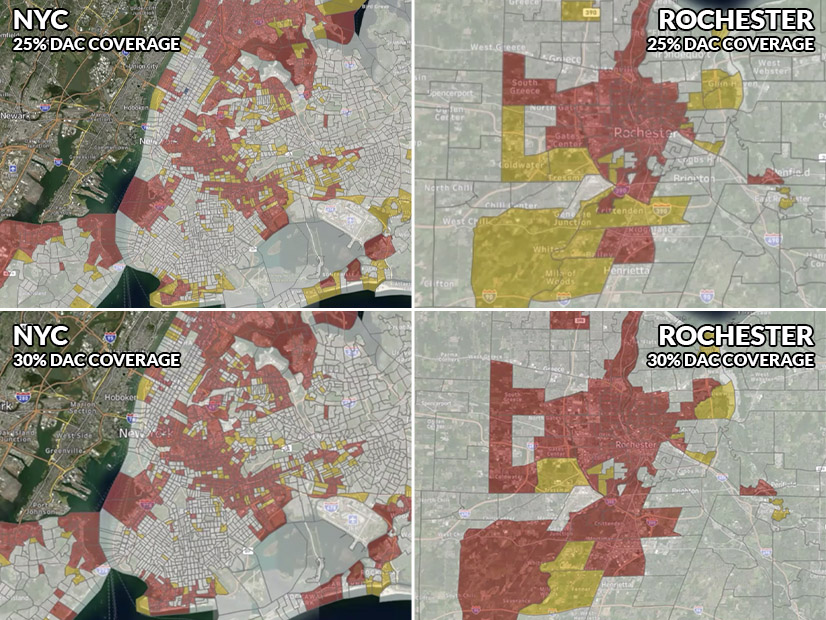
The New York Climate Justice Working Group (CJWG) on Thursday appeared ready to designate 35% of New York’s 2020 census tracts as disadvantaged communities (DACs), after reviewing public comments on the draft criteria.
CJWG members attending the group’s meeting argued that inclusion is better than exclusion, saying that a 35% census tract designation is preferable as it places less logistical burden on the dispersion of funds, since DACs would likely be closer together.
The scope of the percentage designation is critical, since it impacts where and how climate investments will be distributed, and which communities will receive more decarbonization financing.
The CJWG plans to hold a final vote on the criteria determining what percentage of census tracts will be covered as a DAC on Feb. 23. It expects to release final criteria to the public and the state’s Climate Action Council in March.
The CJWG uses 45 indicators to identify DACs, which can be grouped into either environmental burdens or population vulnerabilities. In addition, it defines DACs as “households reporting annual total income at or below 60 percent of state median income.”
The state’s Climate Leadership and Community Protection Act (CLCPA) created the independent CJWG and charged it with developing criteria to identify DACs, as well as requiring the group to meet at least once a year to review its DAC identification criteria and modify them as necessary (S6599).
The CLCPA outlines a goal “for disadvantaged communities to receive forty percent of overall benefits of spending of clean energy and energy efficiency programs,” which aligns with Biden administration’s Justice40 initiative.
Several states, such as California and Oregon, are adopting similar policies that more equitably distribute climate funds, using criteria that include geography, climate risk and historical inequalities to determine DACs.
CJWG member Abigail McHugh-Grifa, executive director of the Climate Solutions Accelerator of the Genesee-Finger Lakes Region, said the CJWG must ensure “no low-income households are left behind, and that limiting the number of census tracts could result in community level projects being lost.”
Alanah Keddell-Tuckey, director of the Office of Environmental Justice at the Department of Environmental Conservation, reminded other members that communities not designated as a DAC, but considered environmental justice areas, will continue receiving decarbonization investments through other funding streams, such as the Environmental Bond Act. (See ‘NEW YORK: Voters Approve $4.2B Environmental Bond,’ Incumbents Successful in Most Contested Governors’ Races.)
Eddie Bautista, executive director of NYC Environmental Justice Alliance, told fellow members that the CLCPA’s intent was to “drive investment on a community level while diminishing historical disparities.” He said the CJWG must consider a designation that “gets us to the highest CLCPA compliance.”
Another CJWG member, Sonal Jessel, director of policy for WE ACT, said she supports a 35% designation because “we must ensure that we are covering as many people as possible.” She asked whether native lands were considered.
Alex Dunn, a consultant with ILLUME Advising who generated the CJWG Tableau maps, confirmed that native lands were part of the tracts considered and advised members to remember that whatever percentage designation they decide upon should balance community vulnerabilities with environmental burdens.


